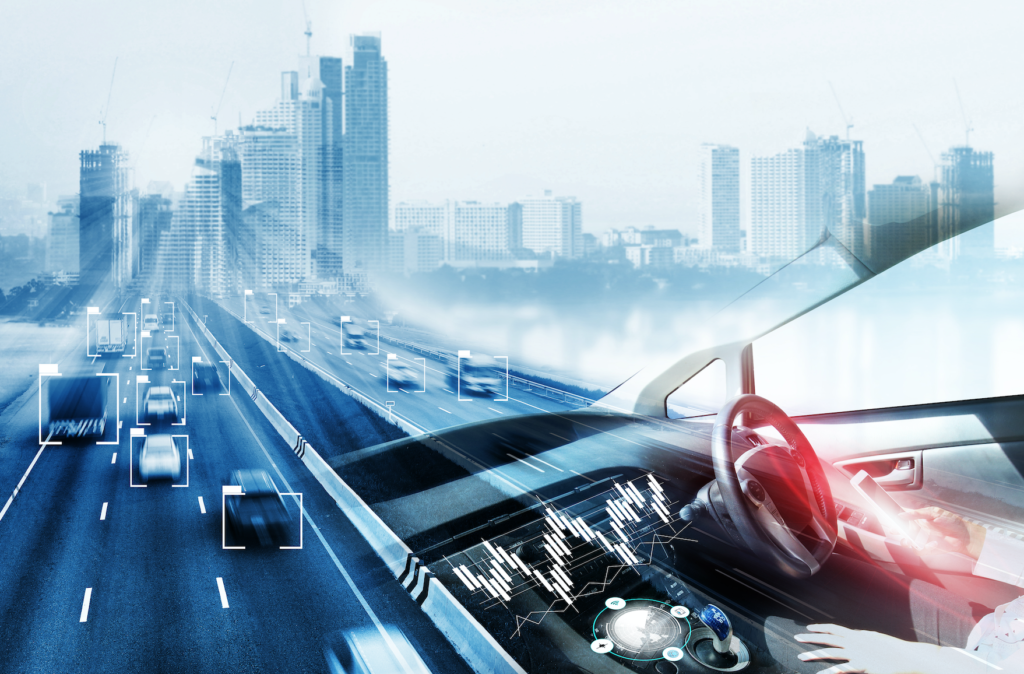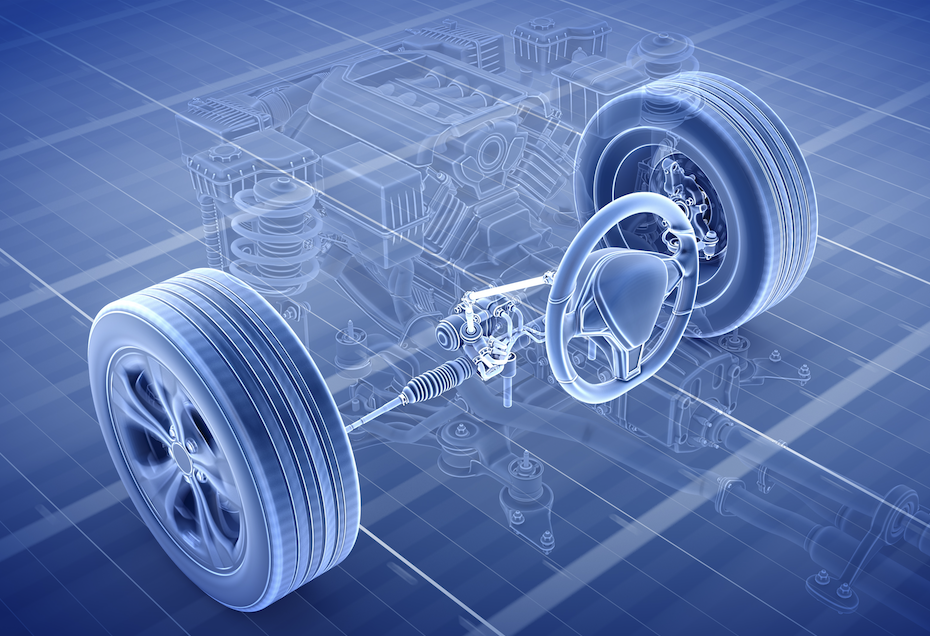To become a safer, more skilful driver, it is essential to master all the controls on a vehicle. With a modern vehicle, these are so more than just the basic functions of the steering wheel, the foot controls, gears etc….Vehicle controls cover a wide range of elements, and each of these elements has its own various features and designs.
Advanced driving is all about having a good understanding of these and how each feature feeds into a larger driving plan. Below we look at the key vehicle controls.

Steering Wheel
Steering characteristics vary between vehicles, it is important that you understand the difference, especially if moving from one vehicle to another. Pull-push is the most well-known steering method. It’s the safest and most efficient way to steer your vehicle. Your steering method should be determined by the control, efficiency and general comfort you feel when driving. This varies from driver to driver, so there is no set rule. Some like a firm feel, while others prefer a light feel to their steering wheel.
Your steering technique can be improved if you take into account:
- The vehicle you are driving – the size of the wheel, the number of turns lock to lock, the weighting of the power steering.
- How you sit in relation to the steering wheel – some people like to be close (often better control), others like to be further away. Experiment and see what works for you.
- Your size and shape. If you have long legs, for example, you may find you need to sit further away from the steering wheel, does this impact how you feel? Experiment and alter; this way, you can find the perfect set-up for you. Many drivers often have no real appreciation of how important it is to get the right set-up for optimum steering control. When you alter your seat, always check your mirrors, as your visibility area will change slightly as the seat moves.

Parking Brake
Many vehicles now have auto-hold, which means when you stop (i.e. at a roundabout), the vehicle automatically applies a brake and then releases when you move off. This compensates for the traditional parking brake. You don’t need to pull up the handbrake (or parking brake) when stationary. However, not all vehicles have this, and not all drivers wish to use it. It’s important to understand how vital the parking brake is and what your vehicle is equipped with.
Brakes
Modern vehicles offer more than just a simple brake setup. While ABS was considered a significant advancement in vehicle technology in the 1980s and early 90s, it’s now fitted on virtually all new vehicles.
ABS helps you keep steering control under very heavy emergency braking (i.e. when without ABS, you would have locked up the wheels and have no steering control). When ABS is activated, you will usually feel a pulsating feel on the footbrake. You need to continue with the same pressure on the brake when you feel this. What is happening here is the ABS is applying and releasing the brakes incredibly quickly (many times a second) – preventing the wheels from totally locking up.
As mentioned, vehicles offer more than ABS. Emergency Brake Assist increases the braking pressure in an emergency. Your vehicle will measure the speed and force you apply the brakes. If you apply at such a speed that the vehicle assumes you’re in an emergency situation, it will help out. It will apply extra pressure – you will often feel the brake pedal being forced closer to the floor than what you’re used to, almost like someone else aside you has their foot on the pedal. Relax. It’s the vehicle helping you out! It will continue with this extra pressure until the ABS is activated, helping you avoid a skid.
Autonomous Emergency Braking – Many modern vehicles are fitted with this autonomous braking. Make sure you are aware of what this does in your specific vehicle. This system essentially brakes for you in an emergency situation – such as when the vehicle thinks you’re going to hit the vehicle in front.

Accelerator
The more you press it, the faster you go. There is not much else to say about this. Or is there? The accelerator plays a crucial part in driving and is a key control you need to master. It’s instrumental in all areas of driving, from low-speed manoeuvres to high-speed cornering and everything in-between.
Many modern vehicles, especially EVs and hybrids, recharge the battery when slowing down. This has an impact on how you use the accelerator. Regenerative braking turns kinetic (depends on movement for its effect) energy into electricity to charge the battery. The electric motor in a hybrid or EV runs in two directions – one to drive the wheels and move the vehicle, and the other to recharge the battery. When you lift your foot off the accelerator and then brake, this motor changes directions and starts to feed energy back into the battery.
When this process starts, you can feel the vehicle slow down. This does vary from vehicle to vehicle. In a number of EVs, when you lift off the accelerator pedal, it feels like you’ve got your foot on the footbrake. This is often referred to as “one-pedal-driving”. Here you modulate your right foot to speed up and slow down, as opposed to going back and forth to the brake and accelerator pedals.
Whether you drive an EV, a Hybrid or not, mastering accelerator application will help produce a safe and comfortable drive.
Clutch
As we move towards EVs, fewer and fewer vehicles have a clutch. Even regular non-EV or Hybrid cars have moved to automatic transmissions. The clutch, in time, will be a thing of the past. Intelligent use of the clutch is all about planning and the smooth application of the clutch pedal. When you observe effectively, you are less likely to make rushed actions when driving. You have seen hazards well in advance and plan accordingly. This approach often helps improve the use of the clutch (along a lot of other things too). You’re not snatching gears, you’re not inadvertently dipping the clutch pedal (riding the clutch).
Some drivers still insist on prematurely dipping the clutch when slowing down, or keep the clutch down when going down through the gears. This is unnecessary. The clutch should be used only when needed and not as a comfort thing or bad habit! On our advanced driving courses, improper use of the clutch is one of the things we help drivers with.
Gears – Being in the right gear will help you negotiate hazards. To improve your gear use, you should aim to be in the correct gear for every road speed and traffic situation. You also should strive to make smooth gear changes and engage the chosen gear without an intermittent gear first if not needed. For example, going from 3rd to 5th gear if you feel 4th is not needed. Also, when slowing down, you don’t need to go down the box (i.e. from 5th, to 4th, to 3rd, to 2nd). Slow your speed and then engage the correct gear, which matches your speed. There are exceptions to this, such as when descending a steep hill.
Indicators and auxiliary controls
You should only use your indictors if someone would benefit. If you’re approaching a junction and you can see no one would benefit (i.e. there is no one around), there is no need to indicate. If you’re unsure or can’t see (i.e. into a blind junction or brow of a hill), then it’s advisable to still indicate. You will need to use your judgement here. If in doubt – indicate. Indicators are much more than the stalks on your steering column. Your brake lights are considered indicators, so is your road position. Use these to your advantage when letting others know what you are doing or are planning to do.
